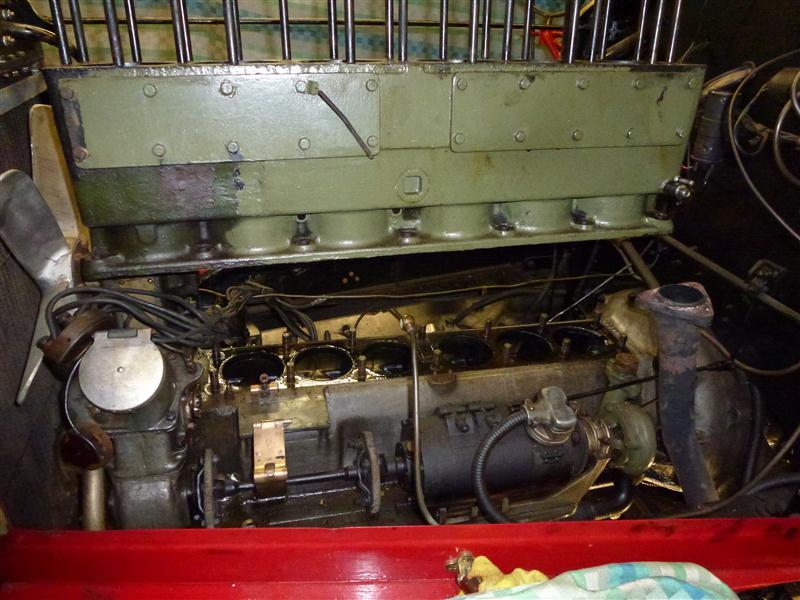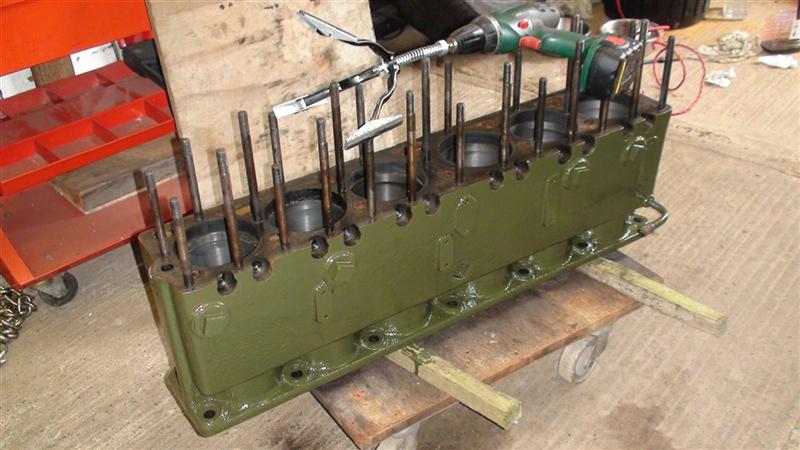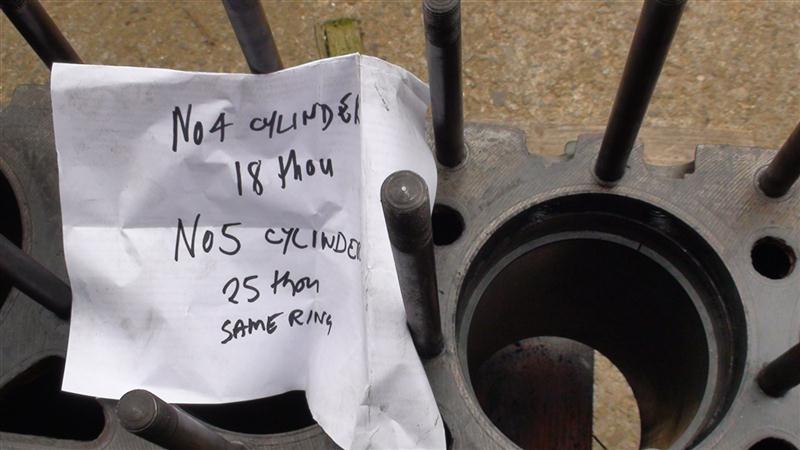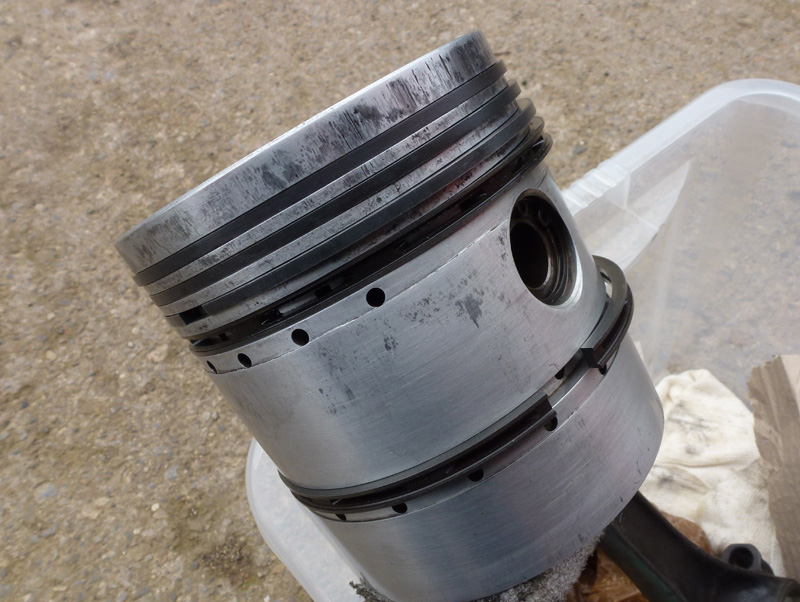

Having seen the state of number 4 piston, it was decided to pullout all the other pistons in case similar failure was imminent with any of the other pistons. In adition it was decided to pull the block off so that the bores could be examined more easily.

The bores were in reasonable condition. However they were given a hone with a 3 stone hone in a n electric drill.

Of course you have to ask why number 4 cylinder 'picked up' in the first place. Measuring the ring gap with the same ring across all six cylinders revealed why. Ring gap on cylinders 1,2,3,5,6 was 25 thou but cylinder 4 the troublesome cylinder was 18 thou. Quite simply cylinder number 4 had been rebored undersize when the 30 thou oversize pistons had been fitted sometime in the past.

It was decided to fit new rings when re-building the engine so a simple jig was made to gap the rings accurately. This consisted of an aluminium plate which had been bored to the exact bore size. A ring could then be dropped inot and the gap measured simply with feeler gauges. Although the ring gapping could have been done with the actual block itself it was far easier with the jig where the head studs do not get in the way.

The number 4 piston was cleaned up with abrasive paper and fitted with all new rings, as a new +030" piston was not available. The Leyland pistons fitted to this engine are machined oval as standard. Although a +040" piston was available the complexity of taking it down 010" whilst still maintaining the oval form ruled out this operation.

Click HERE to continue the restoration story